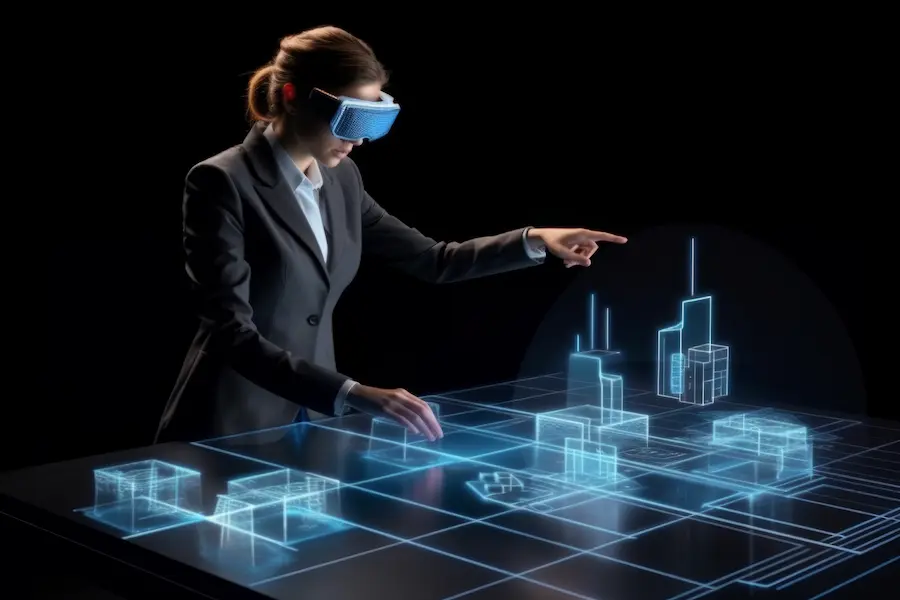Real tech isn’t just some buzzword tossed around in tech circles. Real Tech is about the tangible technologies that are making a real difference in the world right now. We’re talking about innovations like artificial intelligence (AI), quantum computing, blockchain, 5G, robotics, and IoT. These are the tools that are reshaping how we communicate, solve problems, and tackle global challenges.
To me, real tech is about much more than convenience. Real tech is about changing the way we approach problems, finding smarter solutions that can make the world more sustainable, efficient, and connected. Whether it’s in healthcare, education, or urban living, these technologies have the power to improve our daily lives in ways we never imagined.
Artificial Intelligence: Changing the Game
AI is no longer just about machines doing basic tasks. It’s evolving into something far more capable machines that can think, make decisions, and solve complex problems. From voice assistants like Siri and Alexa to advanced machine learning systems in healthcare, finance, and transportation, AI is becoming an integral part of everyday life.
What excites me most about AI is how it’s transforming industries. In healthcare, AI is helping doctors analyze medical images and predict patient outcomes, making diagnoses faster and more accurate. It doesn’t replace doctors, but it enhances their abilities. In finance, AI is helping detect fraud, streamline investment strategies, and support decision-making. In transportation, AI-powered self-driving cars are changing the future of road safety and mobility.
Personally, I’ve seen how AI has become a part of my routine whether it’s through my voice assistant managing tasks or automated systems improving customer service experiences. It’s clear that AI isn’t just changing the tech industry; it’s fundamentally reshaping how we work and live, freeing us to focus on creativity and emotional intelligence the things that make us human.
Real-Life Example: Companies like DeepMind are using AI to beat humans at complex games like Go, showing just how far AI has come in tackling challenges once thought impossible.
Quantum Computing: The Next Frontier
Quantum computing might sound like science fiction, but it’s closer to reality than you might think. These super-powerful computers use the principles of quantum mechanics to solve problems that traditional computers simply can’t handle. Unlike regular bits that can only be 0 or 1, quantum bits (qubits) can exist in multiple states at once, giving quantum computers the ability to process far more complex calculations.
The real potential of quantum computing lies in its ability to solve problems that are currently beyond our reach. Imagine simulating molecular structures to discover new medicines or creating materials that could revolutionize energy use. This technology is still in its infancy, but its potential is massive.
Quantum computing faces challenges, from the high costs of building these machines to the technical hurdles of making them reliable. But with major investments from tech giants like IBM, Google, and Microsoft, we may soon see quantum computers tackling some of the world’s toughest problems.
Internet of Things (IoT): Connecting Everything
The Internet of Things (IoT) connects everyday devices to the internet, allowing them to communicate with each other. From smartphones to wearables to appliances, these devices exchange data to make our lives more efficient, convenient, and connected.
For me, the most fascinating part of IoT is how it’s already changing how we live. I can control everything in my home from thermostats to lights and security cameras with just a few taps on my phone. And it’s not just about convenience; IoT is helping reduce energy consumption and increase security, all while making urban living more sustainable.
In smart homes, IoT devices work together to automate tasks and save energy. In manufacturing, IoT sensors monitor machinery and track inventory in real-time. And in smart cities, IoT is helping optimize traffic flow, reduce pollution, and improve the management of resources.
Real-Life Example: Singapore is already using IoT-powered smart city technologies to improve traffic flow, energy consumption, and waste management, proving just how impactful IoT can be on a citywide scale.
5G Technology: Faster and More Efficient Connectivity
The arrival of 5G technology is set to take wireless communication to a whole new level. With faster speeds, lower latency, and the ability to connect more devices at once, 5G is set to revolutionize everything from IoT to autonomous vehicles and smart cities.
What excites me about 5G is its ability to enhance industries in ways we never thought possible. Autonomous vehicles will be able to communicate with each other in real-time, reducing traffic accidents and improving road safety. Telemedicine will become a game-changer, allowing for real-time surgeries and consultations. And remote education will expand access to high-quality learning, even in underserved areas.
As 5G continues to roll out worldwide, it will not only change how we use the internet but will make cities smarter and industries more efficient.
Conclusion: The Road Ahead for Real Tech
Real tech is already changing how we live and work. From AI and quantum computing to 5G, blockchain, and robotics, these technologies are not just innovations they’re transforming industries and creating new opportunities.
Of course, challenges remain, particularly around ethical concerns, job displacement, and data privacy. But the potential for real tech to shape a better future is undeniable. As we continue to innovate, real tech will help us build a more connected, sustainable, and efficient world.
The road ahead for real tech is bright. The innovations we’re seeing today are just the beginning. While we can’t predict every breakthrough, we can be sure that these technologies will continue to redefine what’s possible. Let’s embrace Real Tech with open minds and a willingness to drive positive change for the future.
Read Also: Automation Solution Explained: How It Can Save Time and Boost Productivity in 2025

